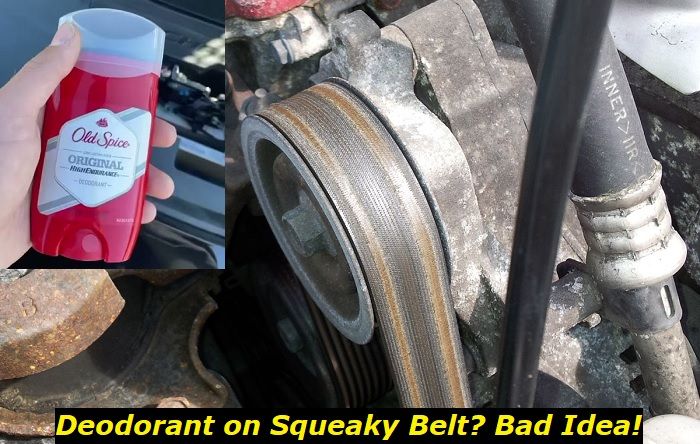The selling point of Acura lies in its reliability, that's why it is capable of holding its own in the market against other known luxury brands. However, during your time driving the car, you may encounter the B123 service code along the way.
B123 code highlights
- Level of urgency:Medium
- Possible culprits:The car is about to hit one of the maintenance intervals
- Price for repair:$100 - $450
- If neglected:Poor maintenance may kill your vehicle fast
- DIY repairs:Possible
- Can you drive?Yes

What the Service Code B123 in the Acura Means
The B123 service code popping on the dashboard of the Acura means it's generally due for an oil change, tire rotation checking, brake inspection, parking brake assessment, cabin air filter replacement, drive belt replacement, and transmission fluid change.
Basically, this means that you should take your car to your local Acura dealership or certified mechanic for its scheduled or required maintenance check-up wherein they will conduct the necessary calibration, repairs, or replacement of the factors involved. These services are all important in order to keep your car running properly and safely.
To further understand the B123 service code, you can refer to your owner's manual or contact a certified Acura technician or mechanic. They will be able to answer any questions you may have, including any details about how often these services are needed and what is required for each part of the maintenance check-up. It is highly recommended that these tasks are done regularly as they play an important role in keeping your car running smoothly and effectively.
Quick Fix for the Service Code B123 in the Acura
Maintaining your Acura is essential to ensure its optimal performance and longer life expectancy. So, if the B123 service code appears on the dashboard, make sure to get it checked out immediately by a trained professional at an authorized Acura dealership.
However, if you and/or your mechanic have already conducted the necessary adjustments, fixes, or replacements of the elements involved in the warning and there's clearly no longer an issue with any of them, a quick way to get rid of the code is via a quick reset.
To do this, simply do the following:
- Start by pushing the Start button twice until the indicators in the instrument panel of your Acura are lit. There's no need to run the engine at this point.
- Using the scroll button on the right-hand part of the multi-function steering wheel, roll it with your finger until the small display on your dashboard displays "Vehicle Settings". Select this option by pushing the scroll button.
- Next, scroll again until the display shows "Maintenance Info." Push the scroll button again to input your choice.
- From there, a prompt will appear that will let you proceed with the resetting by selecting "Reset" or canceling your action by choosing "Cancel". Confirm your choice by choosing "Reset" in the menu.
After these, the display will then show a "Maintenance Reset" and "Reset Completed", meaning you just accomplished the task.
Most Common Problems Falsely Triggering the B123 Service Code in the Acura
If the problem persists after the necessary maintenance, repairs, or replacement works have already been conducted, plus you have also tried doing the nifty quick reset procedure shown here, then, electrical issues may probably be the culprit behind the issue.
Here are the most common factors that may erroneously activate the B123 service code and other warnings in the dash of your Acura:
1. Defective Battery
A defective battery can falsely trigger the B123 service code in Acura vehicles when it is unable to hold a charge and it does not supply the right amount of power to the electrical components of your auto. This could be due to a variety of causes, such as sulfation on the battery's plates, corrosion on the terminals, or an internal short circuit.
In some cases, the battery may have been overcharged or undercharged due to a malfunctioning alternator or voltage regulator. To diagnose this issue, start by checking for physical signs of damage and build-up on the battery and its terminals. Then connect a multimeter to both the positive and negative posts of the battery and measure its voltage. If the reading is below 12 volts even after charging, then it likely needs replacement.
The best solution to this issue is to replace the battery with a new one. When buying a replacement, be sure to match its specifications or get an exact replacement part from your Acura dealership.
However, in the event that the terminals are only dirty, simply clean them with a clean cloth while the battery is disconnected from its cable or use a solution recommended by Acura for the removal of any deposits preventing the proper flow of electricity in the battery terminals.
2. Wiring Issues
The B123 service code in the Acura can be falsely triggered by wiring issues, which may or may not necessarily be related to the battery. Wiring issues can affect any part of the electrical system and cause a variety of symptoms.
To analyze these problems, it is important to identify the specific symptom or symptoms before proceeding with the diagnosis process. The common symptoms that can indicate a wiring issue include the engine stalling or dying completely when starting up, lights dimming unexpectedly, or strange noises coming from underneath the hood.
A manual evaluation is a good way to start diagnosing wiring problems as it allows you to inspect all visible wires and components for wear, damage, or improper connections. This should be done first as it will likely lead to an immediate resolution if the problem is due to a broken or loose wire. If this does not solve the issue, then more sophisticated testing may be necessary.
Tools such as voltage testers and multimeters can also help diagnose wiring issues. These tests measure the connectivity and resistance of various components and wires in order to determine if there are any shorts or improper connections.
It is important to note that these tests should only be attempted by an experienced technician with knowledge of how car systems work. Trying to use these tools without proper training could cause further damage to the system and make it more difficult to diagnose the root cause of the problem.
Once a wiring issue has been identified, it must be addressed promptly in order to prevent further damage or other problems from occurring. Depending on the severity of the wiring issue, replacing certain parts may be necessary. If a wire is found to be damaged or broken, then it should be replaced as soon as possible in order to avoid any safety risks.
Additionally, connectors and other components that have become corroded or worn out over time should also be cleaned or replaced in order to maintain optimal performance. Taking care of these problems quickly and correctly will ensure that the wiring system works properly for a long time.
3. Faulty Fuse
A faulty fuse can falsely activate the B123 service code in an Acura, meaning the code is being registered as an issue even though no actual problem exists due to fluctuating power within the vehicle's electrical system. This often happens when the fuse has a poor connection or an intermittent short, meaning it will sometimes work and then suddenly not. Diagnosing the source of this problem requires recognizing the symptoms, doing manual check-ups, and use of tools for testing.
The most common causes of this issue are a loose connection in the fuse holder, corrosion on one or both sides of the fuse itself, or a broken wire inside the fuse box. If further investigation is needed to figure out what's wrong with the fuse, inspection should first be done by hand to look for signs of obvious damage. This can be followed up by connecting diagnostic equipment such as a voltmeter or multimeter to measure current levels.
The easiest remedy for this is by replacing the problematic fuse. However, if all other options have been ruled out, replacing the entire fuse box may sometimes be a necessity. The parts needed to perform this repair are the new fuse box, fuse relocation harness (if applicable), and replacement fuses of the same amperage.
4. Damaged Sensor
The sensors monitoring the engine oil, transmission fluid level/quality, brakes, tires, filters, and other parts involved in the B123 service code should be checked for possible dirt or damage. Dirty or damaged sensors can cause false triggers of the B123 code, and this is most common when the sensor becomes blocked with debris or oil.
To properly diagnose the source of the problem, it is important to observe all of the symptoms experienced by the vehicle first. This includes any warning lights that appear on the dashboard as well as how your car performs while driving. It can also be helpful to do a manual evaluation by inspecting external components such as hoses and checking for leaks.
If these methods fail to identify an issue with any external parts, then tools such as a scan tool could be used to provide more precise information on what area is causing the fault code to appear or a multimeter should be used for testing the integrity of the sensor's circuitry.
Most of the time, cleaning or replacing the dirty or damaged sensor does the trick.
5. ECU Glitches
Lastly, glitches within the electronic control unit of the car may be the ones to blame. This can be because of malfunctioning software or a hardware issue.
Any problem with its software can be solved via reflashing to patch up its system within the optimal settings provided by Acura. On the other hand, if the ECU hardware or its related modules are already showing signs of physical damage, they should be immediately replaced by a professional mechanic or automotive technician.
Conclusion
Taking these steps should help to ensure that the B123 service code false triggering no longer happens in an Acura. The most important thing to remember when trying to diagnose a problem with the car is that it's not always obvious what is wrong right away, so patience and diligence are always the keys to its resolution.
About the authors
The CarAraC research team is composed of seasoned auto mechanics and automotive industry professionals, including individuals with advanced degrees and certifications in their field. Our team members boast prestigious credentials, reflecting their extensive knowledge and skills. These qualifications include: IMI: Institute of the Motor Industry, ASE-Certified Master Automobile Technicians; Coventry University, Graduate of MA in Automotive Journalism; Politecnico di Torino, Italy, MS Automotive Engineering; Ss. Cyril and Methodius University in Skopje, Mechanical University in Skopje; TOC Automotive College; DHA Suffa University, Department of Mechanical Engineering






Add comment